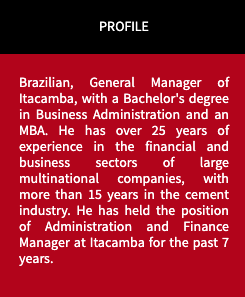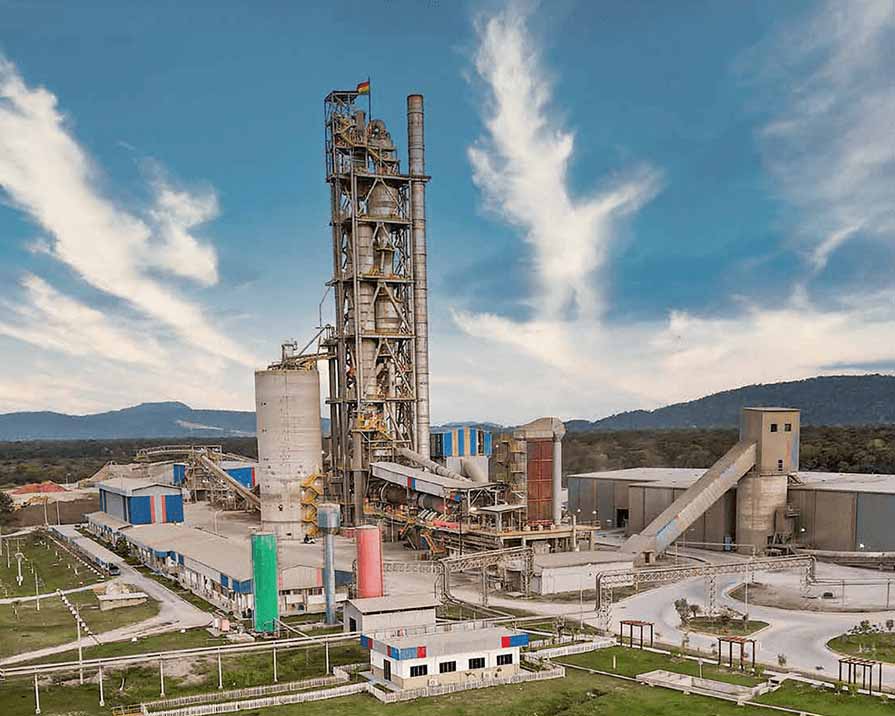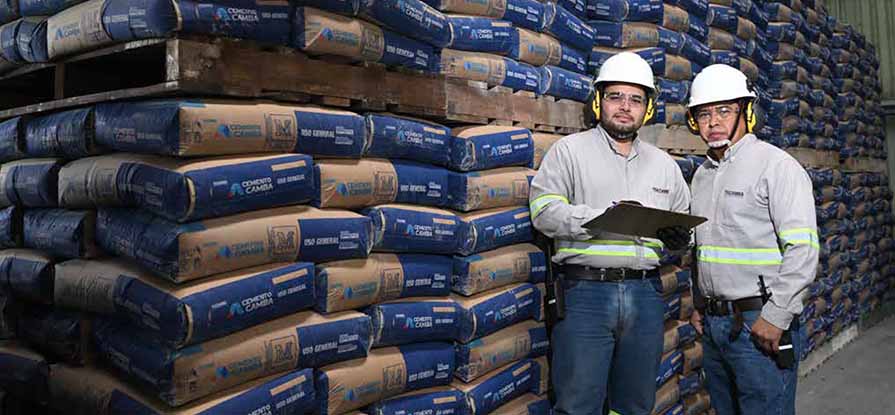Vesna Marinkovic U.
The executive asserts that, through investments in clean technologies and more efficient industrial processes, the plant aims to reduce its environmental footprint and sustainably increase its production capacity, reinforcing its commitment to the environment and its customers.
ISSUE 133 | 2024
Vesna Marinkovic U.
1What types of waste can cement plants utilize in the process of reducing CO2 emissions?
The cement industry is a global pioneer in the development of waste co-processing to partially replace the use of fossil fuels, such as natural gas, with alternative fuels. This allows for a reduction in CO2 emissions and opens the possibility of utilizing and disposing of waste that, under other circumstances, would accumulate and ultimately harm the environment.
The waste used in cement factories can be both solid and liquid. Solid waste includes used tires, plastics, textiles, wood, and paper production waste. Liquid waste includes used mineral oils, solvents, paints, varnishes, and hydrocarbon waste.
Many of the waste materials currently used by cement plants are biomass, as it is considered neutral in terms of CO2 emissions. Examples of biomass used in cement plants include rice husks, sunflower, sugarcane bagasse, and nut waste, among others.
Consequently, at Itacamba, we highlight our project of co-processing some of our own waste, such as cardboard, paper, and broken bags generated in our operations. Since 2021, we have integrated over 770,000 kilos of waste into our production process, preventing it from being sent to landfills.
We are currently in the process of obtaining permits to thermally treat compatible third-party waste, achieving a significant substitution of fossil fuels and contributing to the fight against climate change.

2Does this mean substituting natural raw materials to avoid the exploitation of natural resources and their associated emissions?
Clinker production is the most energy-intensive part of the cement manufacturing process and, therefore, the main source of CO2 emissions. Reducing clinker in cement production is a key strategy to address current environmental challenges. The cement industry has been developing various strategies to reduce the amount of clinker in cement, one of which is the addition of alternative raw materials to compensate for the required mechanical properties of the cement.
Waste that can serve as secondary raw materials includes construction and demolition debris, fly ash from thermal power plants, blast furnace slag, etc.
At Itacamba, we are promoting regulatory changes to allow for the reduction of the clinker factor in cement formulas. We are also conducting studies to source alternative raw materials that enable the production of lower carbon footprint cement.

“The cement industry is a global pioneer in the development of waste co-processing to partially replace the use of fossil fuels, such as gas…”
3Undoubtedly, this initiative is associated with an energy transition process, by saving emissions through material recycling. Are there adequate regulations in the country to support such environmentally friendly practices?
The energy transition is a fundamental process to address climate change, and the cement industry plays a key role in this process. Regarding regulations, it is essential to have a legal framework that encourages and facilitates the use of waste in cement production.
Itacamba has been working for several years with various public and private entities to establish a legal framework that facilitates these practices, which are pioneering in Bolivia but have been very successful in developed countries. Additionally, to promote circular economy and sustainability in the industrial sector.

4It is known that the use of fuel made from end-of-life tires in cement plants can significantly reduce tons of CO2 emissions. Is this replicable in the country?
Without a doubt. At Itacamba, we have been working for years on gradually implementing the thermal treatment of our own waste. In our country, this practice is technically viable, and we have demonstrated this with the help of international experts who participated in the Atmospheric Gas Measurements process at the Yacuses Plant.
During the inspection, authorized by the competent environmental authority, the proper handling and feeding of end-of-life tires as alternative fuel were verified. With the positive results from this process, we are now managing the necessary permits for large-scale implementation.
5In general, what are the most important challenges for Itacamba Cemento S.A. in terms of energy transition?
Itacamba’s energy challenge is to maximize energy efficiency by reducing energy consumption and opting for clean energy alternatives. In our sustainability roadmap for 2030, we have set a goal of achieving a minimum energy substitution rate of 10%.
On the other hand, we face significant challenges such as the need to implement new technologies that require substantial investments. Ensuring a stable supply of alternative fuels is essential to advance in the energy transition. The support of a clear and stable regulatory framework that encourages investment in energy efficiency projects and the use of renewable energy is crucial for achieving these goals. Additionally, encouraging the population to understand the importance of proper waste separation from the source and differentiated collection for sustainable use is key to fulfilling the roadmap toward decarbonization.


6What are the projections for Itacamba Cemento S.A., the only Integrated Cement Plant in Eastern Bolivia, by 2030?
As Itacamba Cemento S.A., we have been part of the Global Compact since 2021 and have set a roadmap toward 2030, which establishes sustainability pillars based on environmental care, circular economy, energy efficiency, social responsibility, diversity, governance, among others.
Itacamba is committed to leading in sustainable practices, being the only cement company in the region certified in sustainability, reflecting its long-term vision of operating in ways that respect the environment and contribute positively to local and national development.
In the coming years, Itacamba aims to strengthen its position as a leader in technological innovation and energy efficiency within the Bolivian cement sector. Through investments in clean technologies and more efficient industrial processes, the plant seeks to reduce its environmental footprint and sustainably increase its production capacity, reinforcing its commitment to the environment and its customers.
Additionally, the company intends to continue being an engine of economic and social development in the region, generating local employment and promoting corporate social responsibility practices that benefit the communities where it operates, as well as contributing to the human development and well-being of its employees and neighboring communities through strategic alliances and training programs.

The support of a clear and stable regulatory framework that encourages investment in energy efficiency projects and the use of renewable energy is essential…
